In a pilot project led by the University of Bayreuth, six alternative and one native tree species were studied at the cultivation stage with regard to their drought tolerance. The study was carried out on the two Bavarian plots of the long-term KLIP18 trial, using field methods to quantify ecophysiological and hydraulic parameters and to continuously record increases in trunk thickness. The KLIP18 trial offered the opportunity to test this on alternative tree species of identical provenances in a matrix of climate and soil properties typical for central Europe. Within the framework of the KLIP18 project, experimental plantations were established in 2012 for an observation period of 50 years, with the following tree species:
- Oriental beech (Fagus orientalis) from the south-eastern Balkans
- Silver lime (Tilia tomentosa), native to south-eastern Europe and Asia Minor
- Lebanon cedar (Cedrus libani) from the Taurus Mountains (Turkey)
- Western hemlock (Tsuga heterophylla) from cool temperate Pacific North America
- Western red cedar (Thuja plicata), also from western North America
- Turkish or Black Sea fir (Abies bornmuelleriana), native to the mountains of north-west Turkey
- Pedunculate oak (Quercus robur) as a reference native tree species
Bavarian KLIP18 areas
The two trial plots are located in northern Bavaria. The Lower Franconian area, in the Main Valley near Großostheim (125 m a.s.l.), is characterised by lower precipitation and higher temperatures as well as sandy soil (drifting sand, > 2 m deep). The Upper Franconian trial area near Schmellenhof (Figure 1) is at 495 m above sea level and has a rather cool and humid climate and a strongly alternating wet and dry, clayey-loamy soil with waterlogging layers at a depth of approx. 0.5-0.8 m (stagnosol).
During the vegetation periods of 2020 and 2021, the trunk thickness growth of five individual specimens of each of the seven tree species was recorded every half an hour, and data on the microclimate and on soil moisture at two depths were collected. In several measurement campaigns in the field, the leaf water potential was determined, and the hydraulic conductivity of the xylem was determined in the laboratory.
Weather conditions in 2020 and 2021
Of the two areas, Großostheim was warmer and drier in both years (Figure 2). From May to September 2020, the average temperature there was 17.6 °C, that is 2.5 °C warmer than in the area near Schmellenhof, and in the same period in 2021 it was 16.8 °C, that is 2.2 °C warmer. The relative humidity was 10 % lower in Großostheim than in Schmellenhof in both years from May to September, and the total precipitation was 80 mm lower. From October 2020 to April 2021, there was 285 mm of precipitation in Großostheim, about 70 mm less than in Schmellenhof.
Measurements of changes in trunk thickness
High-resolution measurements of trunk diameter fluctuations show the immediate response of trees to changes in microclimatic conditions. They provide indications of the water status and the (net) growth of trees (Figure 2).
2020 was characterised by the occurrence of prolonged dry phases during the growing season. A dry phase in August in combination with high temperatures resulted in lower overall trunk growth for most species at both sites than in June and July. After heavy rainfall, all tree species took in sufficient soil water and were able to saturate their stem tissues, visible in the swelling of the trunks. In 2021, there were no prolonged dry periods, and no reactions in trunk diameter due to drought stress could be detected. The trunk growth was thus greater in 2021 than in 2020. An interesting observation was made at the beginning of the measurements in 2020, when there was an obvious shrinking of the trunk diameter of all species during a severe late frost in the middle of May.
There were differences in trunk growth between the two sites. The silver lime in Großostheim reacted sensitively to high temperatures and soil dryness, for example. There it had the lowest growth of all species, whereas it grew quite well in Schmellenhof (Figure 3). The biggest diameter growth of all species studied was shown by the western hemlock in both years in Schmellenhof, with an increment of 6.9 mm in diameter in 2020, and 8.8 mm in 2021. For the other species, trunk diameter growth was between 3 and 5 mm and did not differ significantly between the two sites.
Seasonality of the growth increase
The duration of the growth period for 2021 was determined using the effective increases in thickness determined from the dendrometer data. The measurements began at the end of April 2020 in Schmellenhof and at the beginning of May in Großostheim, when relatively warm weather meant that the trunk thickness growth had already started. Figure 3 summarises the calculated values of the annual trunk growth increment and the duration of the growth period for all species for the year 2021. On both sites, the growing season started earlier for conifers (13 to 21 April) than for deciduous trees (9 to 13 May). An exception was western red cedar, which did not show any gain in thickness until 26 April in Großostheim and 3 May in Schmellenhof. Western hemlock was the tree species with the longest period of trunk diameter growth (168 days in Schmellenhof), silver lime the species with the shortest period of growth (81 days in Großostheim).
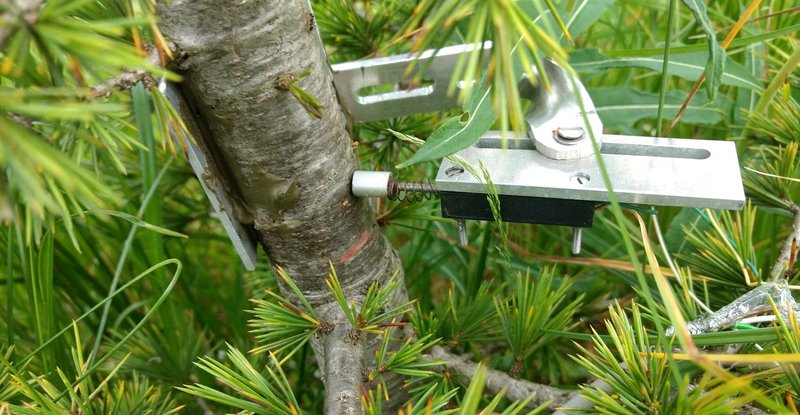
Fig. 4: The daily changes in the trunk diameter can be determined using dendrometers. The high-resolution measurements show the immediate reaction of the trees to changes in air temperature and precipitation. Among other things, this provides insights into the adaptability of the tree species studied to drought. Photo: V. Horna (University of Bayreuth)
Hydraulic limits of drought tolerance
The water-conducting tissue in the trunk links the water reservoir in the soil with the leaves, where transpiration occurs. As this movement is towards the leaves, the water in the tree trunks is under tensile stress. The properties of this hydraulic system are of central importance for the drought tolerance of a tree species.
As the soil dries out and the air becomes drier and warmer, the water in the conduits is subject to tensile stress. Depending on the structure of the conduits, they withstand varying degrees of tensile stress before embolisms develop in the conducting vessels of the xylem, i.e. air bubbles form, and the water columns tear.
The characteristic of the increasing loss of conductivity of the xylem with increasing tensile stress (embolism sensitivity) is determined on shoots in the laboratory using vulnerability curves. On these curves, the xylem negative pressure (= xylem water potential) is determined at a conductivity loss of:
- 12 % (P12, incipient embolism formation)
- 50 % (P50, critical value for survival in conifers)
- 88 % (P88, critical value for survival in deciduous trees)
Strategies of leaf water balance regulation
The xylem water potential (tensile stress in the xylem vessels) fluctuates daily between a (more) relaxed state before sunrise and a more or less tense state (more negative water potential) at midday. This is due to the increased demand for water through transpiration with a limited uptake capacity of the roots. The warmer and drier the ambient air and the less water is available from the soil, the more negative the water potential values are in the leaves and in the xylem. However, plants can limit the increasing tensile stress by closing the stomata.
This conservative strategy of trees, to protect themselves from embolism through early closure of the stomata (isohydry) is at the expense of growth, as it hinders the intake of carbon dioxide for photosynthesis. Late closure of the stomata at lower water potentials (anisohydry) risks the embolism of the conduits, but maintains photosynthesis for longer. The transitions between the strategies are fluid; anisohydric species are considered to be more drought-tolerant. From the minimum achieved water potential Pmin of a species and the determined water potential at which embolism formation starts (P12), a hydraulic safety margin and an indication of the drought sensitivity of a species (Figure 6) are obtained.
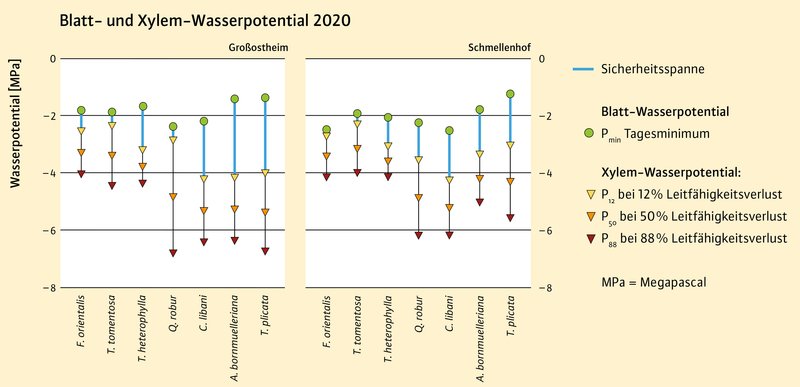
Fig. 6: Measurement results of various hydraulic parameters, in each case the most negative measured mean value for Pmin (n = 5) of the year 2020 of both plots for the respective species. The blue line shows the safety margin, here the distance between Pmin and P12 (measure of the safety buffer for the onset of embolism formation). Pmin data for T. plicata 2021 (2020 not measured). Pmin values in Großostheim are less negative than in Schmellenhof, because it had rained shortly before the measurements.
Drought stress tolerance strategies
Our data provide initial conclusions on how the tree species studied react to drought stress. The oriental beech and silver lime were much more likely to develop embolisms in their xylem than other species.
The Oriental beech showed (almost) no reaction to drought in its thickness growth, and barely showed signs of closure of the stomata, but thus came very close to the threshold level for incipient embolism formation. Oriental beech is probably therefore the most drought-sensitive of the species studied. In silver lime, an early, sensitive stomata response at the expense of thickness growth and a low margin of safety were observed. This species is thus classified as drought-sensitive.
Like the oriental beech, the pedunculate oak did not show a reaction to drought in its thickness growth. The insensitivity of the pedunculate oak to quite negative leaf water potentials (anisohydry) in combination with a low likelihood of developing embolism and a very large safety margin indicates that the species is drought-tolerant.
Of the coniferous species, western hemlock, like oriental beech and silver lime, showed a high sensitivity to embolism and the strongest growth of all species. Its growth was however sensitive to drought, as were its stomata. The safety margin was somewhat larger than with oriental beech and silver lime, which is why western hemlock is classified as somewhat less drought-sensitive.
The Turkish fir reacted sensitively to drought in its growth and in its leaf water potential, with a very large safety margin at the same time. In this species and in the western red cedar, an adaptation of the hydraulic system to the dry site in Großostheim was observed. This may allow them to endure drought conditions for longer, and both species can be classified as conditionally sensitive to drought. The Lebanon cedar shows the clearest adaptation to dry conditions, with very low susceptibility to embolism, a very wide safety margin at low Pmin (anisohydry) and growth hardly affected by drought.
The initial assessment of the drought sensitivity of the different species gives the following order of sensitivity, with the most sensitive first: oriental beech > silver lime > western hemlock > Turkish fir ≈ western red cedar > pedunculate oak > Lebanon cedar.
The ranking is based on results obtained from young trees. In the case of older trees, other factors also play a role, e.g. the water storage capacity in the trunk, root depth, or crown and root competition in the stand.
Outlook
The methods used to record the reactions of individual tree species to the variability of climate, weather conditions and soil provide an insight into their adaptability to drought. The result is a mosaic of characteristics that is not yet complete. In the short time available for this pilot study, only some of the traits that determine drought tolerance in plants could be investigated.
During the study period, there were also only few extreme dry spells, such as those experienced for extended periods in 2018 and 2019. Nevertheless, all methods proved suitable for analysing the immediate ecophysiological response of the trees to the variability in weather conditions. The effects of a severe late frost could for example also be recorded using the dendrometers.
Late frost susceptibility is another important factor in the selection of alternative tree species. Late frosts will be a major problem in the future on damaged areas that need reforesting, as young trees on open areas can be more exposed to severe low temperatures at night (radiation frost). The methods used lend themselves to further investigations, both in monitoring-type approaches and in experimental desiccation and irrigation trials.
Summary
The aim of the pilot project is to assess the drought sensitivity of young plants of alternative tree species on the basis of ecophysiological and hydraulic parameters. With the help of the methods used, initial findings on the species-specific ecophysiological responses to differences in weather conditions and site were obtained in 2020 and 2021. The methods lend themselves to further investigations both within the framework of monitoring-based approaches and in experimental desiccation and irrigation trials.
The project “Potential of alternative tree species in climate change - early detection of drought stress on new experimental plots in Bavaria” (klifW002) (running time: 01.05.2020 - 31.12.2021) was financed by the Bavarian State Ministry of Food, Agriculture and Forestry, as was the establishment of the long-term trial KLIP18 (running time: 01/02/2009 - 31/12/2012). Since the end of the project period, KLIP18 has been funded by the Bavarian State Institute for Forests and Forestry.

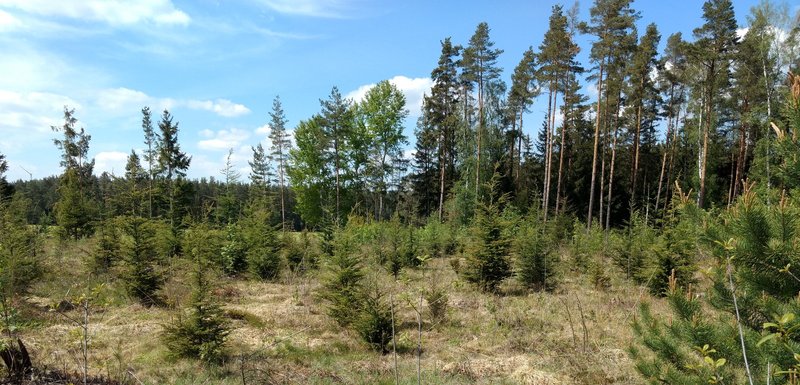
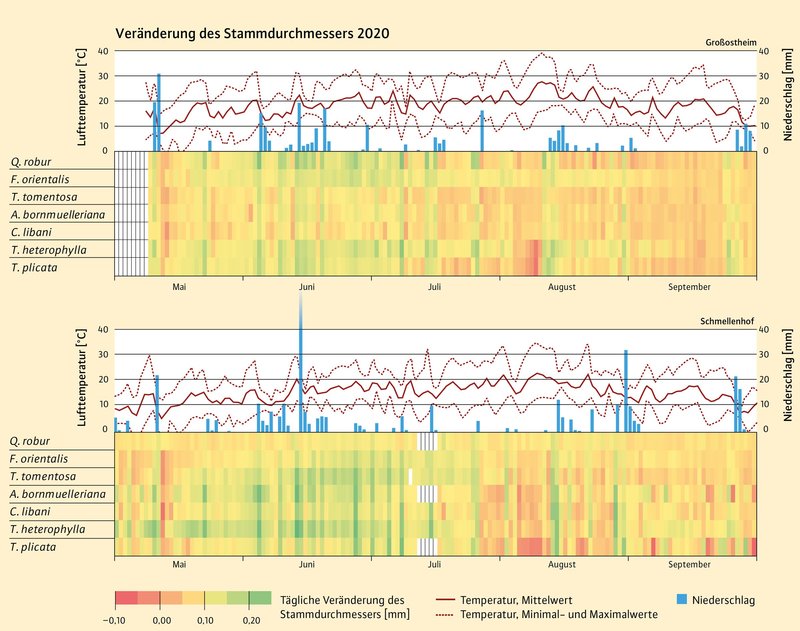
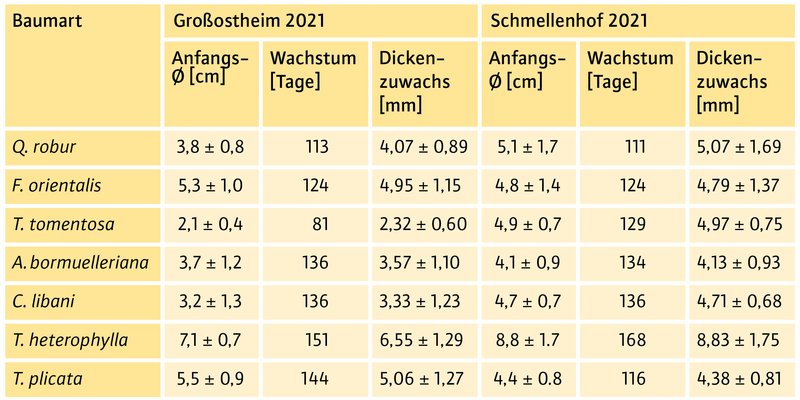
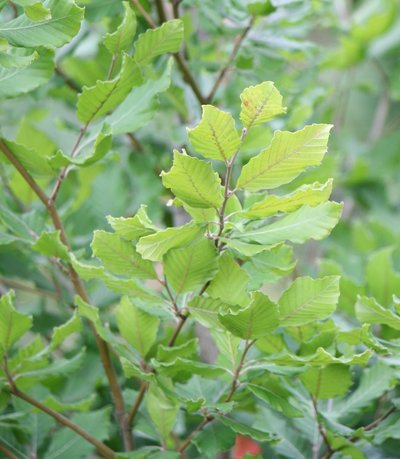
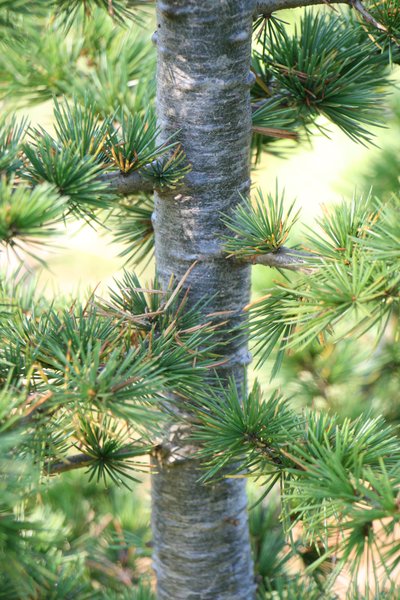
![[Translate to English:] [Translate to English:]](/assets/_processed_/2/e/csm_trockenrisse_stamm_35418f5a29.jpeg)